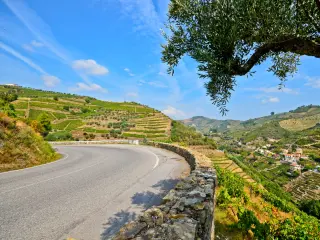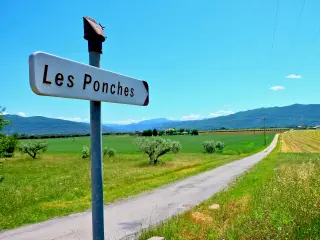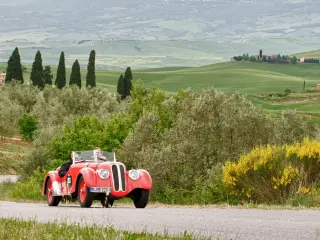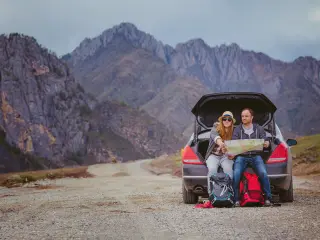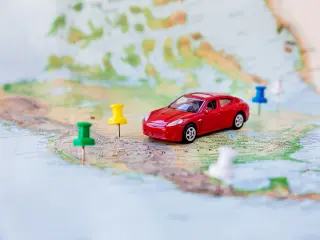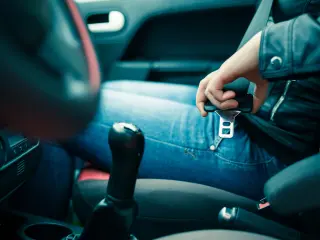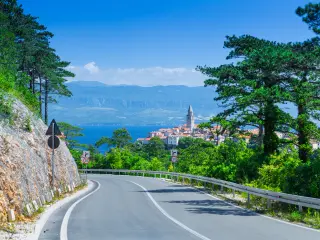Everything you need to know about: Driving in Europe in winter
With turreted castles, thick forests, and soaring mountain ranges, not to mention incredible skiing and charming Christmas markets, winter is an amazing time to go exploring in Europe.
Whether it's a road trip down to a mountainside chalet or you're hoping to go from A to B for more practical reasons, jumping in your car and seeing it for yourself sure beats getting on a plane and flying straight over it.
However, it's the same thing that makes these scenes so magical - the snow - that puts many people off driving in Europe in winter.
Granted, not all of the continent is blanketed in the white stuff, but there are still freezing temperatures and frequent rain to contend with. For anyone not used to navigating these conditions, it can be a scary prospect.
When you think about it though, this excuse just isn't good enough - after all, millions of Europeans go about their everyday business, well, every day during this time, despite the weather.
With some prior preparation, a sensible approach and a jot of confidence, there's no reason that it can't be a hugely satisfying and successful experience.
So, how do you prepare to drive in Europe in winter? Well, a lot of the principles are actually the same as anywhere else.
The main things are that you know what to expect, that your vehicle is ready to face the challenges that the weather brings, that you take all of the necessary equipment, know how driving laws differ between each country you're visiting and adapt your driving style to suit weather conditions. It's really that simple.
With more hints, tips and some absolutely-mustn't-ignore advice, here's everything you need to know about driving in Europe in winter.
For the most part, we focus on mainland Europe in this article as this is the area more likely to experience the kind of extreme conditions that are alien to other drivers, but know that much of the it (the driving advice especially) does also apply to other areas such as Scotland, Iceland and high points in the Greek and Cypriot mountains.
Road conditions in Europe in winter
Will the roads be snowy and icy?
One of the most intimidating factors - especially for people from countries that rarely experience snow - is the thought that there will be snow constantly covering the roads. However, this isn't necessarily true. In fact, some parts of Europe rarely experience any snow at all.
When it does snow, unless there's been a particularly heavy dump, it still shouldn't be too much of a problem as most Western European countries are pretty hot on clearing major roads using snow-ploughs, although some of the smaller side-roads may be a bit choppier.
The only exception is the UK, where it rarely snows, and so the entire country goes into meltdown when the two-inch threshold is met - it's best just to stay indoors when this happens.
You may find that you encounter more weather-related challenges in countries where the quality of roads tends to be slightly lower, including Bulgaria, Romania and Latvia. In these cases, all you can do is make sure you take it slow and steady, and resist the temptation to drive like the locals.
In general then, as long as your car is suitably prepared for the snow (more on that later) and you use common sense, you shouldn't have too much of a problem with driving in Europe in winter. Generally the snow will start in around October and last through until around March or April.
The real danger comes in the form of freezing rain - aka ice - which can cause stopping distances to become 10 times longer.
Again, most roads will be gritted, but if roads are becoming more icy as you drive then take it very slowly and pull over where necessary.
Top tip: Time your departure wisely; often roads are gritted overnight and snow and ice will settle over the top of it, making it particularly slippery for the first few drivers.
Likewise, you don't want to leave too late, or it may all have been churned up. Somewhere in the middle is a good idea. Sounds like a good excuse for a lazy breakfast to me?
Will roads be closed?
It's a possibility - try as they might, the authorities can't control the weather, and if conditions are extreme then roads will be shut in order to ensure public safety.
If it's looking particularly iffy and you have a WiFi or data connection, then it's worth checking traffic reports for the next part of your journey every time you stop.
Across Europe, Highland and mountain roads are particularly vulnerable to road closures, with some even going all out and turning into ski runs! Needless to say, these roads should not be attempted, even in 4WD vehicles.
Daylight hours
When you're planning your journey, bear in mind the fact that European daylight hours in winter are significantly shorter than they are in summer, so even if you've previously spent long days and gentle evenings driving through the Alps, you won't necessarily be able to do that this time.
This is particularly an issue in Scandinavian countries and Iceland, the latter of which has been known to experience just four hours of daytime in the depths of winter.
While driving on well-lit motorways and large roads should not be a problem across Europe, you may find that you have more trouble cutting through darker mountain roads.
It's a good idea to book your hotels with regard to the roads you'll be facing on any given day - i.e. if you're driving in mountainous regions, expect to cover significantly less distance.
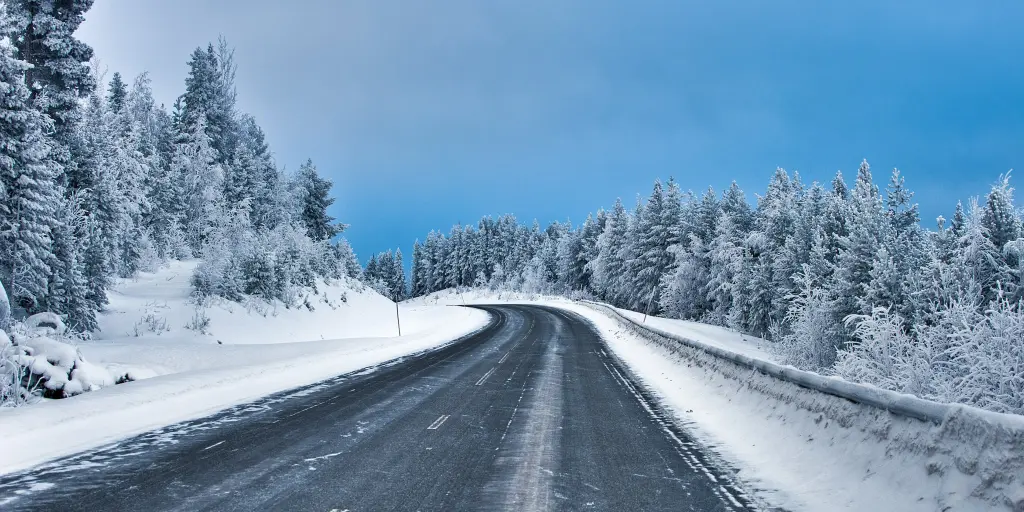
Before you leave: how to prepare your car for driving in winter
Get your car serviced
It's always worth getting your car serviced before setting off on a road trip, or on any long journey for that matter, but it's especially important before you go driving in wintry conditions.
As much as driving in snowy conditions is exhausting for you, it also takes a toll on your vehicle, so you may as well give it a head-start by making sure it's in tip-top shape.
Check your battery
Have you ever been on a skiing holiday, gone to take a photo of the incredible view in front of you and found that your camera or phone is all out of juice, despite the fact that you swore you pumped it full of charge it overnight? Well, that's because of the cold.
You see, the cold drains batteries much more quickly because they rely on chemical reactions to make them work, but these take place far more slowly in cold temperatures - and this applies to car batteries too.
Ensure yours is fully charged before you set off, try to use a new one if possible, and check that it is holding charge. For added security, take the charger with you. Some countries - such as France - have particularly expensive roadside recovery charges.
Top up with antifreeze
If your car has been properly serviced then this should have been taken care of already, but if not, and there's one thing that you don't forget, let it be antifreeze. While batteries can be recharged, a cracked engine can be an absolute nightmare to repair.
Check that you have enough coolant in the system before you do. If you don't, top it up with a 50-50 mix of water and antifreeze; quite often people will top it up with water in warmer weather, forgetting that any mixture already in there will then be getting diluted.
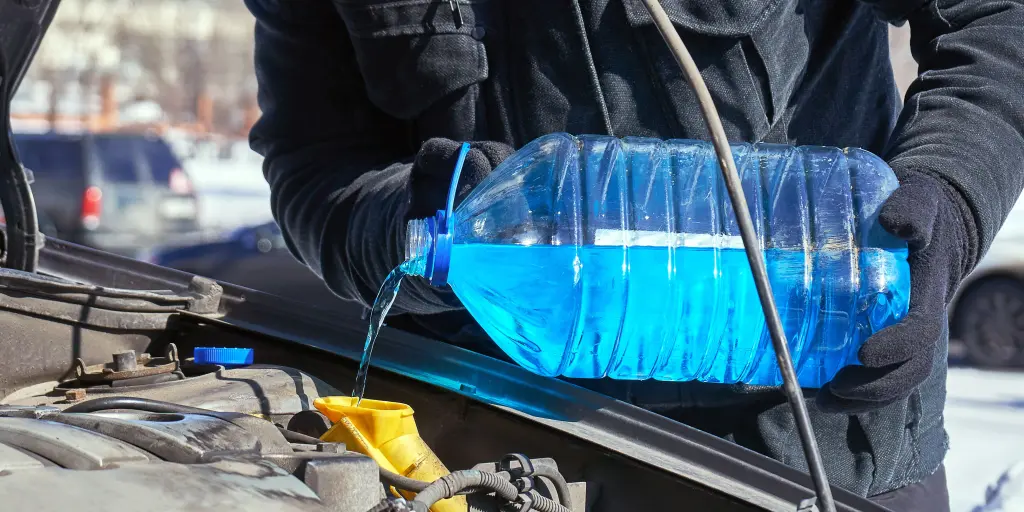
The kit you'll need for driving in Europe in winter
Whatever you do, make sure you don't skimp on kit; when you're broken down on the side of a freezing French highway, having to sit outside your car (because that's the law) and wait for an overpriced state-authorised recovery truck (also the law), the trade off won't seem worth it.
Winter tyres
First things first - what are winter tyres? Officially called Mud and Snow tyres (M&S), they're essentially exactly what they say on the tin - tyres capable of dealing with muddy and snowy conditions.
Many countries across Europe require M&S tyres with a minimum tread depth of 3mm (4mm in Austria and the Czech Republic) to be fitted to vehicles during the winter months, usually coming into force at the start of November and ending in roughly March or April.
Even outside of these dates, if the weather warrants the use of winter tyres, you're required to use them.
At present, winter tyres are mandatory in: Austria, Belarus, Bosnia and Herzegovina, Czech Republic, Estonia, Finland, Germany, Iceland, Latvia, Lithuania, Macedonia, Moldova, Montenegro, Russia, Serbia, Slovenia, and Sweden.
Snow chains
Another thing you may want to pack in the trunk are snow chains, a set of removable chains fitted to a car's tyres to give them better grip in the snow. Most European countries either require you to carry snow chains when driving in snowy and mountainous regions or recommend that you do.
As a rule, snow chains must be carried in: Albania, Andorra, Austria, Bosnia and Herzegovina, Bulgaria, France, Germany, Italy, Norway, Slovakia, Sweden, and Switzerland. They must be fitted when road conditions are challenging or road signs indicate that they should be used.
In the UK and the Netherlands, snow chains can only be used when snow is heavy and they will not damage the road surface.
Most car rental firms in the 'required' countries have a supply of snow chains available for rental, but these usually come at an additional cost.
Top tip: Practice fitting these at home before you leave - there can be nothing more miserable than trying to get them onto the tyres when it's -8 degrees outside and you have no idea what you're doing.
An emergency box
While we'd always suggest you carry a small first aid kit - and indeed, in many countries it's compulsory - it's also worthwhile putting together an emergency box in case you run into any other problems on the road.
Aside from medical supplies, this should include practical items such as blankets, a torch and spare batteries, warm clothes, sensible boots, a shovel, jump start cables and a portable phone charger. And don't forget the snacks - never forget the snacks!
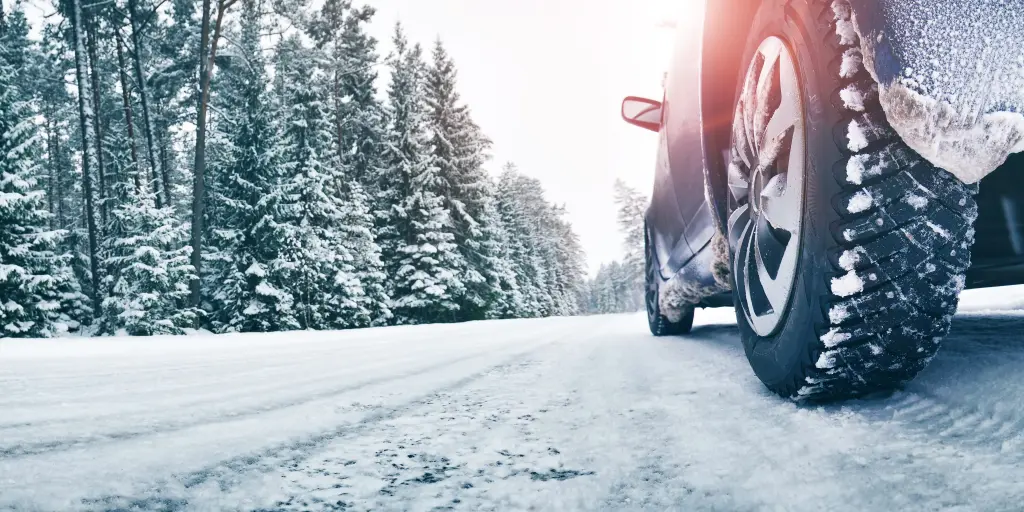
The info you'll need to know
Research the terrain you'll be covering
It might be that you're sticking to motorways - in which case great, crack on - but if not, then you'll need to put some careful thought into the route you're going to take.
Do you feel comfortable navigating hairpin bends in snowy weather? If not, is there another route that you could take?
To say that the terrain across Europe varies is an understatement, and planning your journey well in advance allows you to know what to expect, lets you read up on any hairy stretches of road, and be prepared before entering any areas notorious for having bad weather.
Note that a distance that looks small on a map can actually be a very long way when it's all up and down over mountains, just like a route that says 50 miles can actually take a long time when it's all small lanes. Manage your expectations accordingly.
What is your car capable of?
The golden rule of driving in Europe in winter is not to attempt anything your car can't handle, so be realistic about what your car is capable of - a sports car isn't going to get you up a snowy hill.
If you're unsure about whether or not your car is going to be able handle driving in Europe in winter, then get advice from someone in the know before you go.
If you're planning on hiring a car once you get out there, check with your hire agency that the one you're renting will be capable of doing what you've got in store for it.
At the end of the day, upgrading to a more winterproof model is going to be far cheaper than bringing the original one back in pieces.
The law of each country you're driving through
Different countries will have different rules and regulations with regards for driving in winter, including speed limits, snow chains and when it is and isn't acceptable to be on the roads.
Things you may need to know about:
- What individual road signs mean
- Any items it is compulsory to carry
- If headlights need to be switched on at all times
- If snow chains must be carried
- If speed limits are variable according to the weather
- If winter tyres need to be fitted
You can always check our handy 'Guides to driving in…' whether you're going to France, Portugal, Italy or a whole host of other countries - and remember to check back, as we're constantly adding new countries and new information.
Changes in the law as you cross between different European countries
If you're travelling between countries during your European road trip, also pay attention to how rules change as you move across borders - 'We've only just got here' won't be counted as an excuse for not having winter tyres when you've crossed between France and Germany.
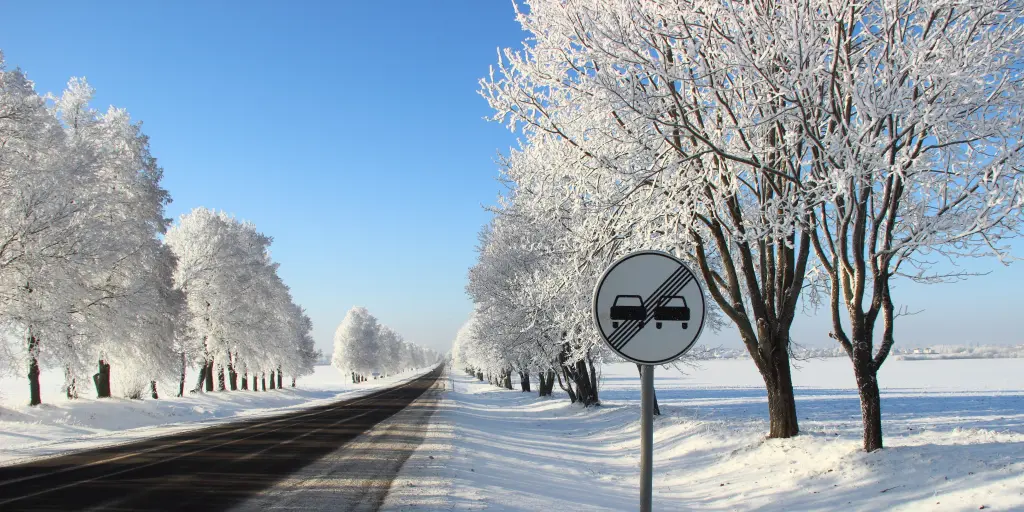
How to drive safely in Europe in winter: Hints and tips
Check weather conditions before you leave
Even the best laid plans sometimes fail and it pays to be prepared, so always check the road conditions before you leave. This includes traffic, weather, road closures and if there have been any accidents.
Doing this will not only save you from just sitting in traffic all day, but also give you a heads-up regarding other routes you could follow and where you may need to take extra caution.
Maintain your vision
When you're keen to get going it can be very tempting to take a 'that'll do' approach to clearing the ice and snow off of your window, but when we're talking about wintry weather, it really won't do.
Not only is not being able to see where you're going dangerous (duh), in many countries, driving with your vision obscured by dirt, snow or ice could land you with a hefty fine.
Also take the time to wipe off any snow that has accumulated on the roof to stop it falling into your line of vision.
The same goes for vision inside of your car - make sure your windows have fully demisted before you set off.
Leave extra stopping distance
On snowy or icy ground, your stopping distance increases tenfold; winter tyres will help to balance this out, but they're still no match for caution and regularly testing your brakes.
Listen to traffic signs
Just because other people don't always abide by the rules or the road signs, it doesn't mean you shouldn't - like it or not, the locals know these roads a lot better than you do.
Take regular breaks
Whenever you're embarking on a long drive, you should make sure to take regular rest stops to get some fresh air and perk your brain up. However, when you've also got wintry weather to contend, with this becomes even more important.

